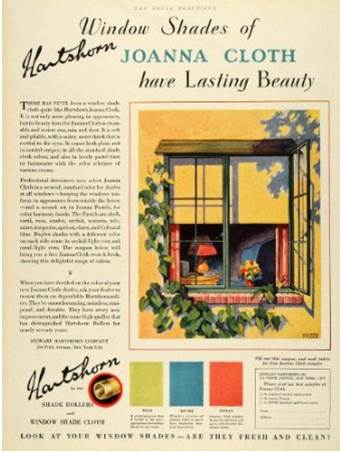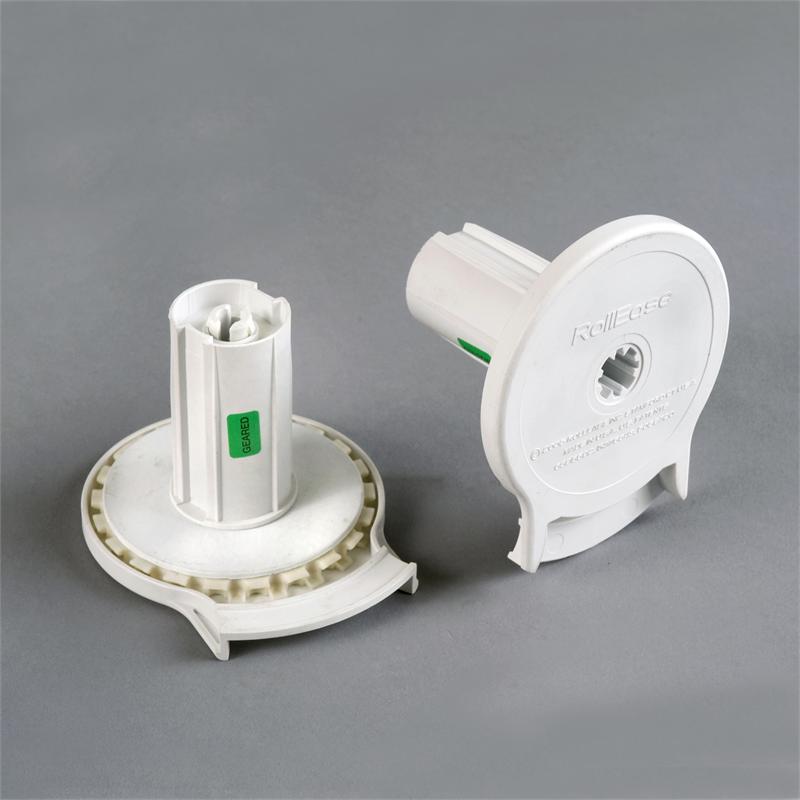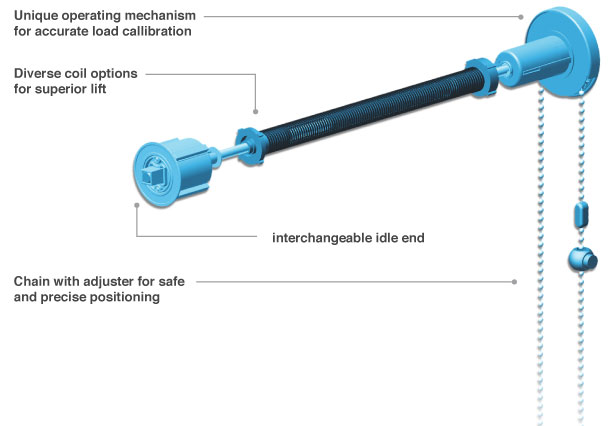Scotch Holland Roller Blinds’ originated in the early 1700s. They were made from Holland linen, which came from the Netherlands. The fabric was first produced in Glasgow, Scotland, by James Louis Robertson and John King, hence the name ‘Scotch Holland.’
Before being used to make roller shades, the durable Holland linen fabric was bleached, dyed and starched. It was then dried and pounded by solid wood bars. The whole production process lasted around ten days.
The first roller shade made from Scotch Holland linen did not have a spring mechanism. Instead, when the blind was closed, the fabric lay in folds on the window ledge. To open the blind, you had to pull on a cord which was attached to a top rod. To secure the open blind, you wound the cord around a cleat.
Scotch Holland roller blinds had a wooden batten at the top and a wooden bottom bar that was sewn into the fabric. The side hems were sewn by hand to stop them from fraying. Brass pins were fixed into each end of the wooden roller and the roller blind was fixed to the wall by means of small brass flanges.
Scotch Holland fabric continued to be manufactured in Scotland using traditional methods until the 1980s.
The ‘spring roller window shade’ was invented in the USA in the 1800s. The original design was patented by the father, uncle and brother of Stewart Hartshorn, who, together with his father, started the Stewart Hartshorn Company. This company initially manufactured the ‘spring roller window shades’ in New York, moving production to East Newark, New Jersey in 1872.


In 1864, Stewart Hartshorn patented an improved design using a ratchet and gravity pawl. This spring roller window shade was the forerunner of today’s roller shades as it used a spring mechanism to allow fabric to be rolled up or down. The spring roller window shade became very popular in America and several other production plants were opened in the early twentieth century.
Meanwhile, in Victorian England, the ‘Tidmarsh Patent Action Spring Roller’ for roller shades was patented by the British company, Tidmarsh, in the 1880s. Today, the company still exists and uses the neile mechanism for historically authentic roller blinds used in National Trust properties and other historic buildings.
No doubt you are familiar with the standard shade clutch control by Rollease. If you are familier then you know how difficult it is to pull the shade up and down and how many repairs you will have to make to fix the broken clutch or cord. That is because there is no additional assist like we have in our InSync LiteLife System. We have even had clients pull their shade and instead of the fabric coming down, the entire shade has ripped out of the wall; this is just unacceptable. Below is an example of the typical clutch control.

Now that you’re ready to drop that dysfunctional standard shade clutch, please let me introduce you to our newest and most exciting innovative product for manual shade control called; InSync LiteLift by InSync Controls.
InSync LiteLift provides a smooth constant effortless lift of all size shades with finger tip control. Its unique mechanism balances the weight of the shade which alleviates stress on the chain which is the major cause of maintenance associated with chain operated shades. It’s durable, heavy-use design is especially essential in commercial applications where products are subject to constant misuse and abuse.
LiteLift carries a 25 year limited warranty against breakage.
For more information on our LiteLift system, visit our website by clicking here or contact us today.
Best,
Sam Gordon
Vice President
InSync Solar
neil@insyncsolar.com
845.352.5064




